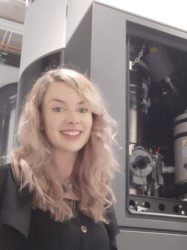BibTex format
@article{Jiang:2019:10.1021/acs.jpcc.8b11027,
author = {Jiang, W and Conroy, MA and Kruska, K and Olszta, MJ and Droubay, TC and Schwantes, JM and Taylor, CA and Price, PM and Hattar, K and Devanathan, R},
doi = {10.1021/acs.jpcc.8b11027},
journal = {Journal of Physical Chemistry C},
pages = {2591--2601},
title = {In Situ Study of Particle Precipitation in Metal-Doped CeO<inf>2</inf> during Thermal Treatment and Ion Irradiation for Emulation of Irradiating Fuels},
url = {http://dx.doi.org/10.1021/acs.jpcc.8b11027},
volume = {123},
year = {2019}
}

